Why you're more closely related to a salmon than a salmon is to a shark - understanding phylogenies
Hi there! This is my first Steemit post so I would like to introduce myself briefly. If you can’t wait to read more about your relationship with fish, just skip the next paragraph.
I come from Denmark. I study biology. But I take an interest in such diverse topics as math, guitar playing and Korean. I suspect that my posts on Steemit will mostly deal with things related to natural science and math.
Okay, let’s get to it. The headline of this post ends with a fancy word. A phylogeny is an evolutionary history. It is the way different organisms in a group are related. A phylogeny is depicted as a phylogenetic tree which is essentially a heritage tree. As a real tree, it has branches that may give rise to new branches. Evolutionary trees are usually dichotomous, meaning that branches split into exactly two new branches whenever they split. Branch points are called nodes, and each node represents the last common ancestor of the organisms in the two new branches emerging from the node.

This is a good time to deal with an old and misconceived critique of evolution: “If humans descend from chimps, why are there still chimps?”. The premise is wrong; humans do not descend from chimps. Instead, we share a common ancestor with chimps. At some point (based on fossils and molecular data, about 6 mio. years ago), the ancestral population split in two. One of the new populations developed into humans, the other into chimps. Humans also share a common ancestor with lettuce. But we say that we are more closely related to chimps than to lettuce, because humans and chimps share a more recent common ancestor.
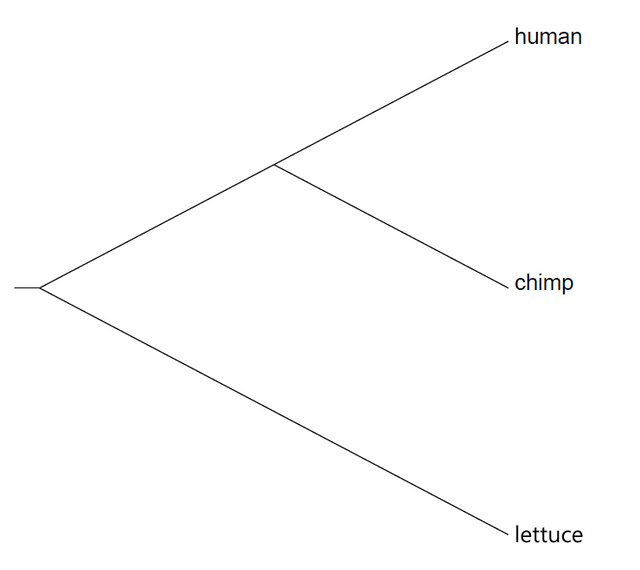
The tree below depicts the relationships within the group of organisms known as vertebrates. This group consists of mammals (like yourself), birds, non-avian reptiles, amphibians and fish. We call them vertebrates, because they have a backbone, a string of bones called vertebrae.
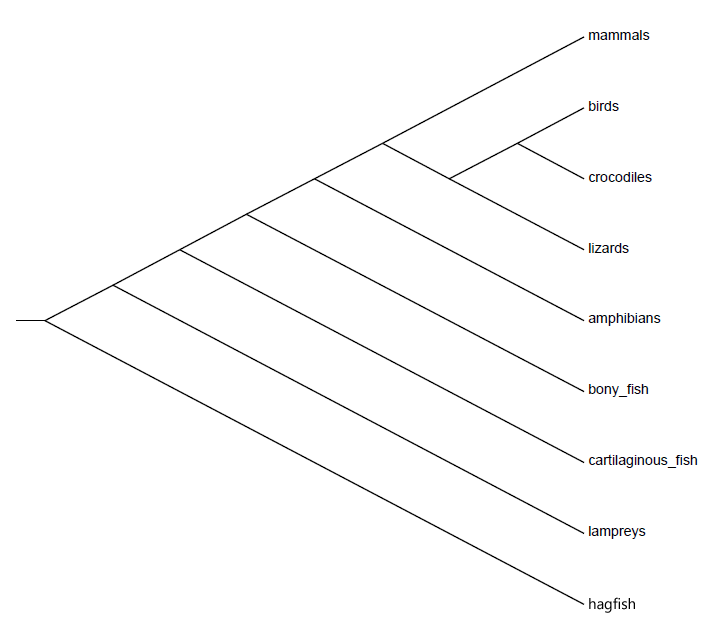
Note that all the taxa (groups of organisms; singular: taxon) are placed on a line at one end of the tree. The fact that they are all lined up here means that they are all alive today. And because they all share a common ancestor (the node at the base of the tree), they have all been evolving for the same amount of time. Whenever this phylogeny is drawn, there’s a tendency to place mammals at one end of the picture. It’s like we can’t let go of the idea that our own taxon is somehow more developed and merits a special spot in the great picture. In fact, the next tree illustrates the same relationship.
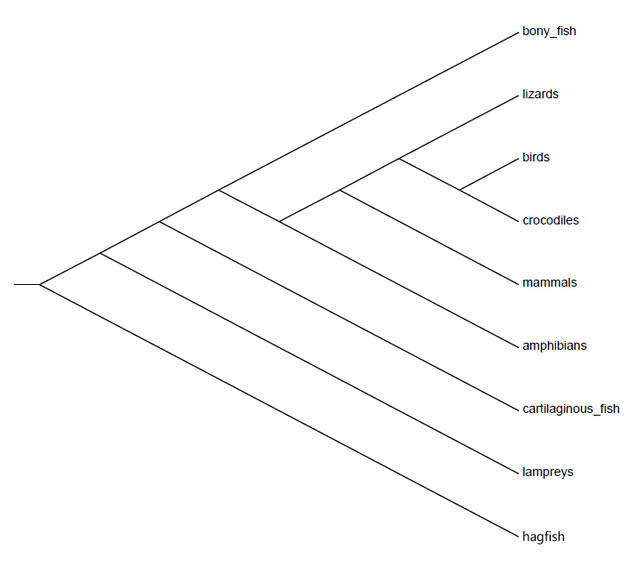
The order of taxa at the top of the tree is not important. What matters is the order of branching events leading to the different taxa. Mammals are more closely related to birds than to amphibians. Because of this, the node separating the bird line from the mammal line should be closer to the top of the tree than the node separating the mammal line from the amphibian line.
Phylogenetic trees can be subdivided into groups. There are two kinds worth considering:
Monophyletic group: A common ancestor and all its descendants.
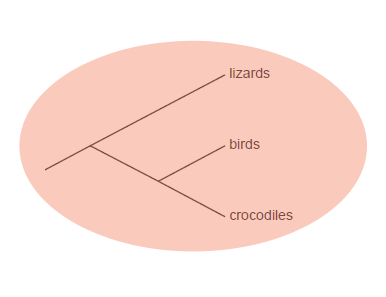
Paraphyletic group: A common ancestor and only some of its descendants.
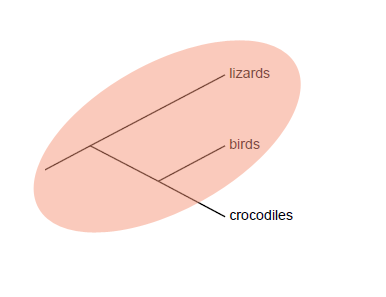
Examples of monophyletic groups are mammals, birds and bony fish. Examples of paraphyletic groups are non-avian reptiles and fish. A taxon in a monophyletic group is more closely related to any other taxon in the group than to any taxon outside the group. For instance, no organism is more closely related to a mammal than another mammal. Paraphyletic groups do not have this property.
Let’s take another look at the vertebrate phylogeny. This is the most recent common ancestor of humans and bony fish.
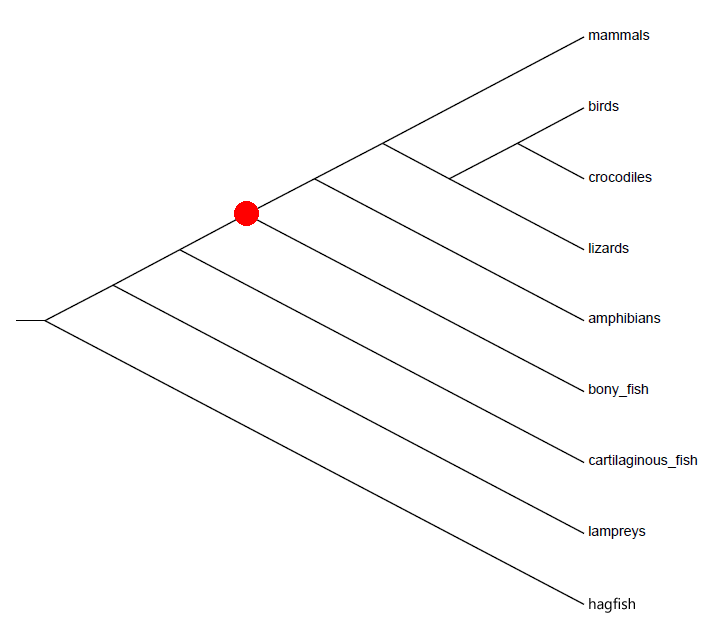
And this is the most recent common ancestor of bony fish and cartilaginous fish. Note that we had to travel further back in time (towards the base of the tree) to find this node.
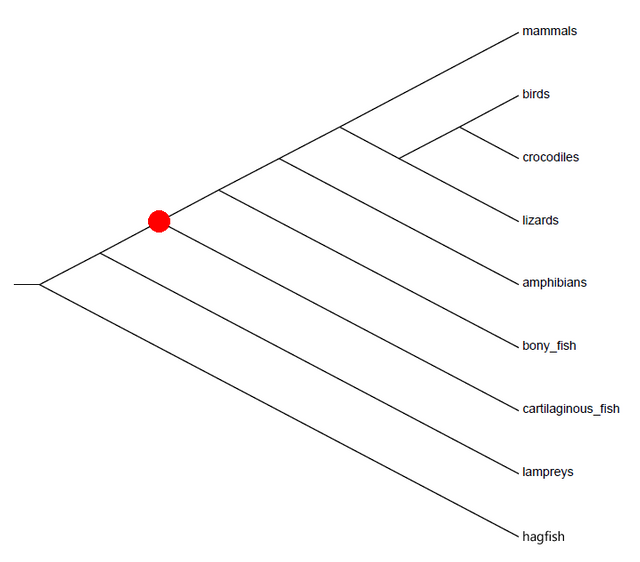
A salmon is a bony fish. A shark is a cartilaginous fish. Therefore, humans are more closely related to salmon than a salmon is to a shark. Moreover, humans and salmons are equally related to sharks, because the node separating bony fish from cartilaginous fish is also the node separating cartilaginous fish from humans. Phylogenies are fun, eh?
It’s all very well to be able to derive these conclusions from existing trees. But how did we come to draw the vertebrate tree this way in the first place? This, I’m afraid, is beyond the scope of this post. But to take away the worst of your doubts, I’ll finish off by noting that bony fish and cartilaginous fish are not as similar as they appear at a glance. As their names imply, their very skeletons are made from different materials. The same goes for their scales. They have features such as fins, gills and overall body shape in common, but this reflects the fact that they have shared the same habitat for millions of years. The fact that bony fish and cartilaginous fish look like each other but not like humans strongly suggests that the last common ancestor of fish and men looked more like a fish than it looked like a man. The change of habitat in our line of evolution (we left the water) required our bodies to change too. Fins became useless, and legs became an advantage. We started breathing through lungs instead of gills. Eventually, we came to look a lot different from our fishy ancestors.
Oh yes, and a sparrow is more closely related to a crocodile than a crocodile is to an iguana.
…
I went to http://iubio.bio.indiana.edu/treeapp/treeprint-form.html to draw the phylogenetic trees.